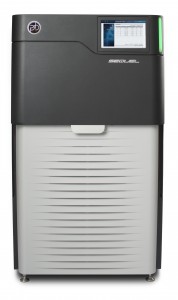Pacific Biosciences Launches the Most Accurate Sequencer for Long Reads

Pacific Biosciences has launched a new sequencer, the Sequel System, with improved throughput and scalability and lower costs and footprint respect to its predecessor, the PacBio® RS II System. The new device is based on the company´s proprietary Single Molecule, Real-Time (SMRT®) Technology.
The Sequel System conserves the attributes of the PacBio® RS II: long reads, consensus accuracy and homogeneous coverage -all due to the SMRT technology. The sequencing workflows are unchanged, since both systems rely on the same robotics. However, the Sequel System costs half the price and occupies one third the volume, allowing great scalability.
The SMRT technology exploits the natural process of DNA replication, and DNA synthesis can be observed in real time. SMRT cells contain thousands of zero-mode waveguides (ZMWs), tiny wells that are illuminated from the bottom. This attenuated light acts as the most powerful light microscope in the smallest detection volume. A DNA template -from a library constructed with amplicons, sheared DNA libraries and cDNA- and an attached polymerase are tethered to the ZMW bottom. When phospholinked nucleotides are added and linked to the DNA, a fluorescent probe is released, different for each one of the four nucleotides, in the illuminated volume. The emitted fluorescence is identified.
Credit: Pacific Biosciences
Increasing the number of wells per cell for higher throughput
The crucial improvement in the Sequel System lies on the SMRT cells, which have been rearranged to contain 1 million ZMWs, a more than 6-fold increase with respect to the PacBio® RS II. This allows to process 7X more reads.
The Sequel System has a touchscreen for controlling runs and a workdeck for loading samples, reagents and SMRT cells. It also features intuitive run setup tools and flexible run time and size. The workflow is robotically controlled.
The main applications for the Sequel System are:
- Creation of whole genome de novo assemblies of eukaryotes
- Cohort studies for structural variants
- Full-length sequencing of transcriptomes
- Target regions not accessible by other technologies
- Complex population genomic variation detection
- Detect epigenetic modifications
Throughput and costs could be improved further in the future, as SMRT cells will be designed to contain more ZMW wells.
Source: Pacific Biosciences
